Timekeeping is about to reach new heights with ACES, the Atomic Clock Ensemble in Space. Built by Airbus for ESA, ACES will be launched to the International Space Station on 21 April and installed outside ESA’s Columbus laboratory.
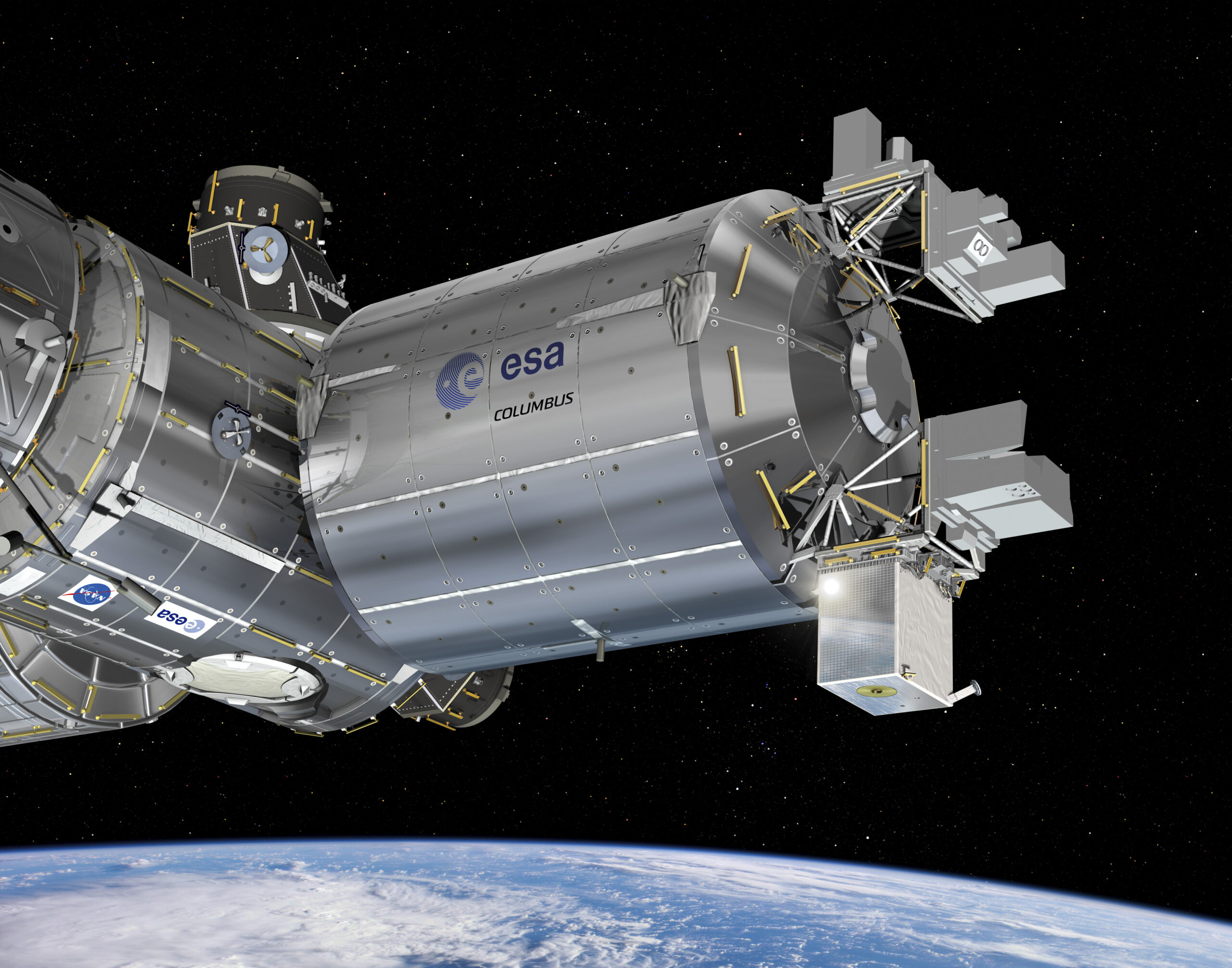
A rendering of ACES on the outside of ESA’s Columbus laboratory on the International Space Station.
Credit: ESA-D. Ducros
The instrument features two cutting-edge atomic clocks, PHARAO and SHM, which will work together to generate the most accurate time signal ever sent from space. By linking the best clocks on Earth with its own, ACES will improve global time synchronisation, testing fundamental physics and advancing scientific research.
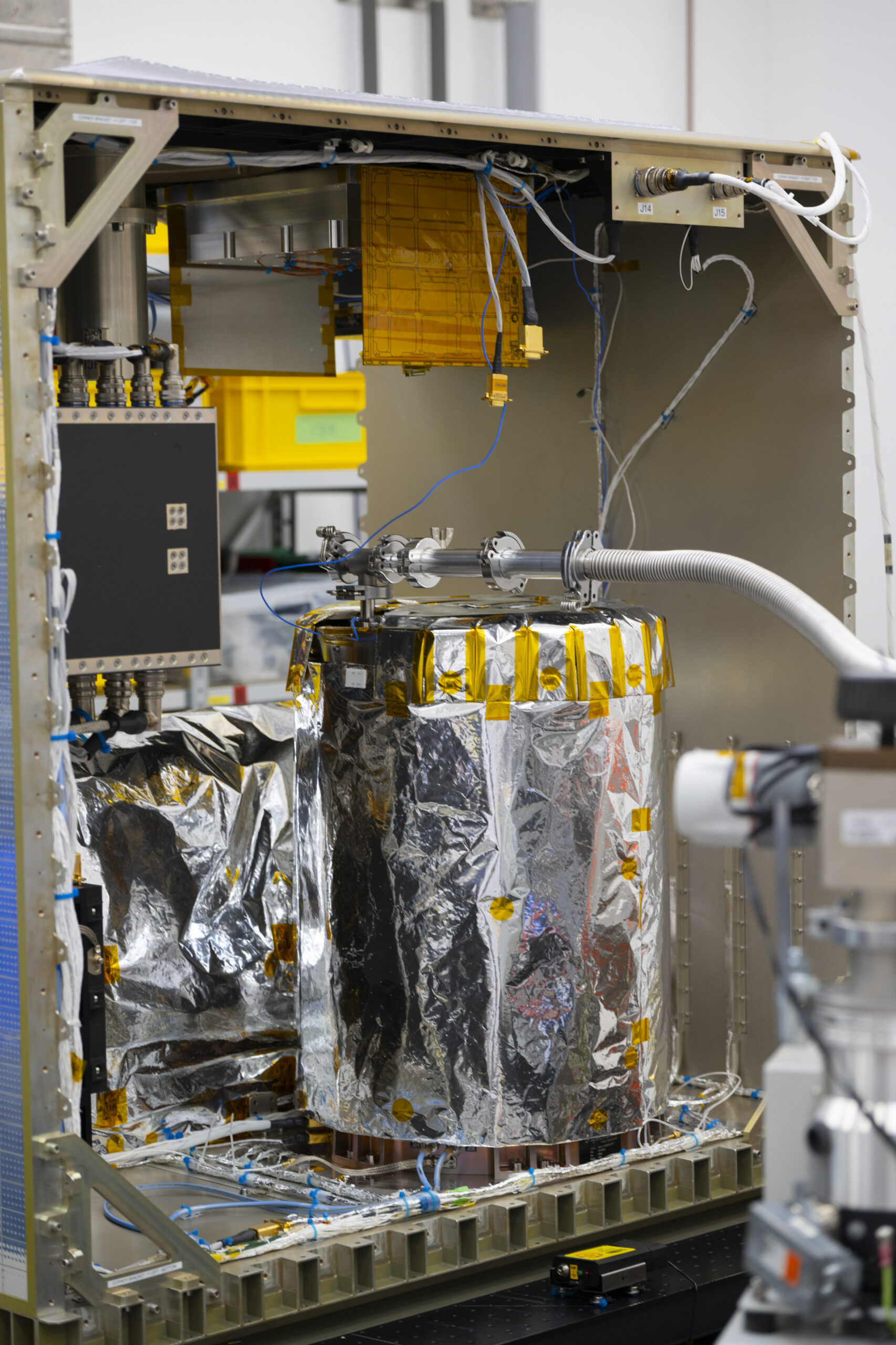
ACES in the cleanroom at Airbus in Friedrichshafen, Germany, in spring 2024.
Credit: ESA-S. Corvaja
Atomic clocks
At the core of ACES are atomic clocks. Unlike mechanical clocks, which rely on gears or pendulums that can be deformed by a warm or humid day, atomic clocks measure the vibrations of excited atoms, which oscillate at an incredibly stable frequency. Since frequency – the number of oscillations per second – defines time, atomic clocks provide a precise and stable standard.
These clocks are so reliable that since the 1960s, the second has been defined by the frequency of vibrations of caesium atoms, specifically as 9 192 631 770 oscillations of a caesium atom’s transition from an excited state to a “ground”, or unexcited, state. This method is the foundation of modern timekeeping, essential for everything from scientific research to GPS navigation.
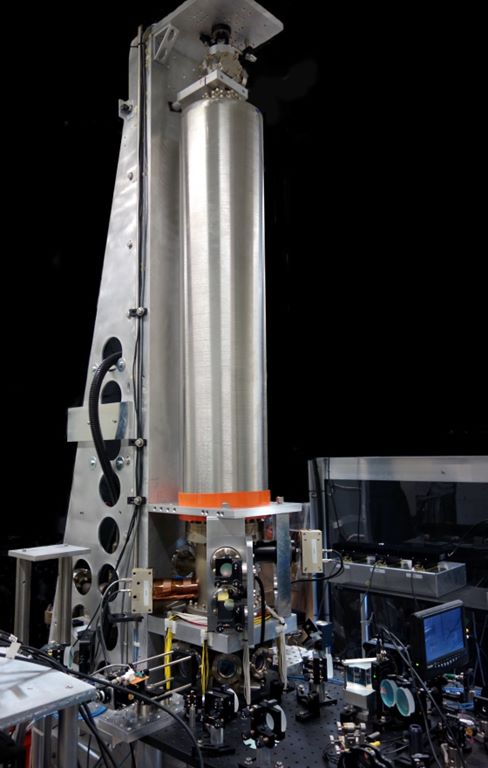
Caesium fountain atomic clock at the National Institute of Standards and Technology (NIST).
Credit: NIST-A. Novick
PHARAO: the cold caesium atomic clock
PHARAO is a cold caesium atom clock in space and was developed by CNES, the French space agency.
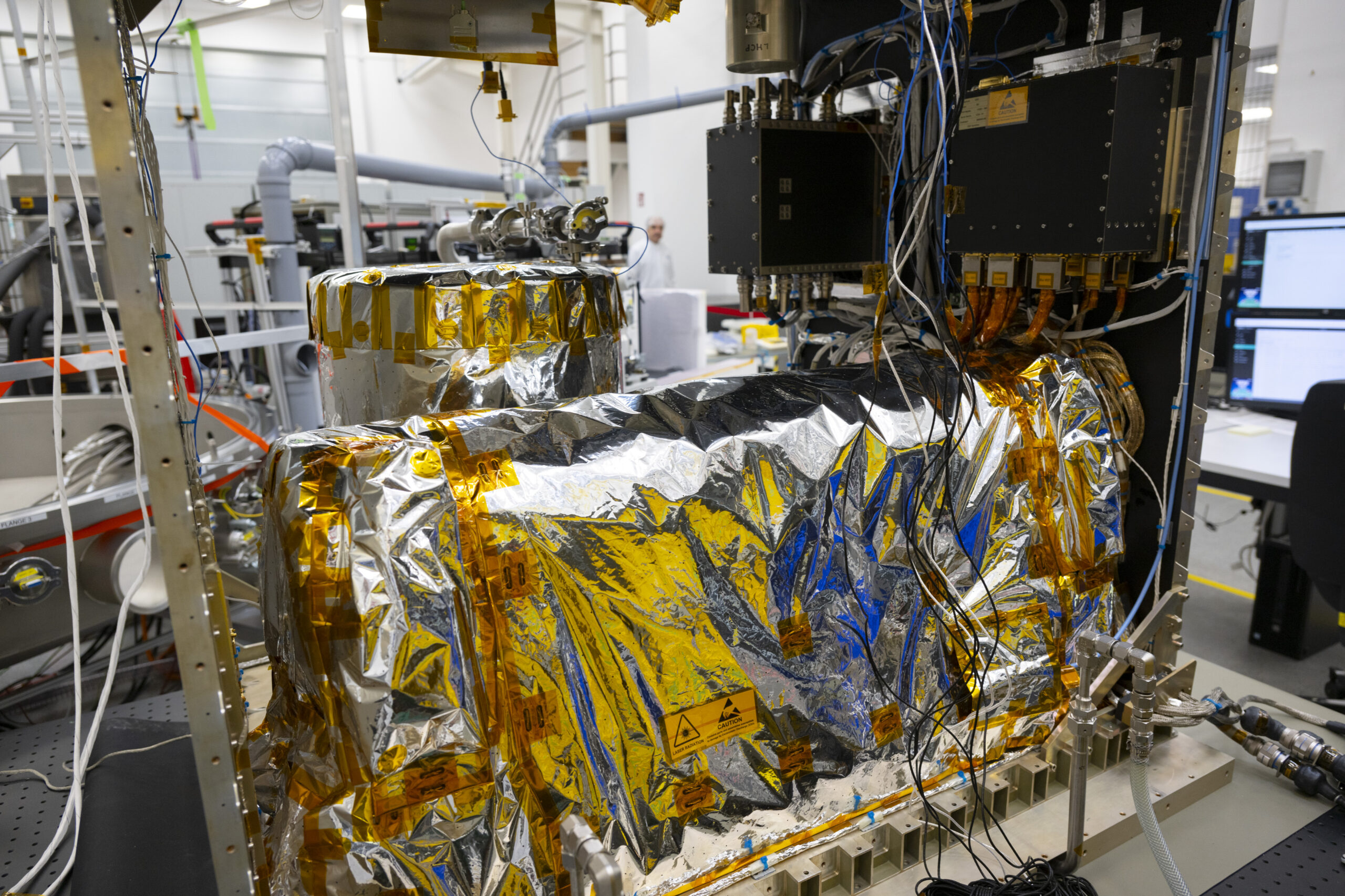
PHARAO in the cleanroom at Airbus.
Credit: ESA-S. Corvaja
The accuracy of a caesium clock depends on the prolonged lifetime of an atom in an excited state*. PHARAO will use two key factors to achieve this goal: the microgravity environment of the International Space Station’s orbit around Earth, and laser cooling of caesium atoms.
On Earth, caesium fountain clocks toss atoms upwards a few metres in a vacuum chamber, allowing them to interact with microwave fields for a long time as they rise, and then fall due to gravity. In contrast, in microgravity, the atoms in PHARAO can move more slowly without being pulled down by the stronger gravity on Earth. Laser cooling brings the atoms’ temperature close to absolute zero, almost bringing their motion to a standstill before they are tossed upward in the fountain.
PHARAO is the first cold caesium atomic clock to operate in space. Its fountain design, combined with the benefits of microgravity and laser cooling, allows for extended observation of atomic energy transitions, making PHARAO one of the most precise atomic clocks ever built for space.
*Atomic clocks measure time by observing an atom’s transition from an excited state to a ground state with a fixed frequency. According to Heisenberg’s uncertainty principle in quantum physics, the longer the lifetime of an excited state, the more precisely the frequency of the transition can be defined. So, if the atom stays in an excited state for longer, the clock will be more accurate.
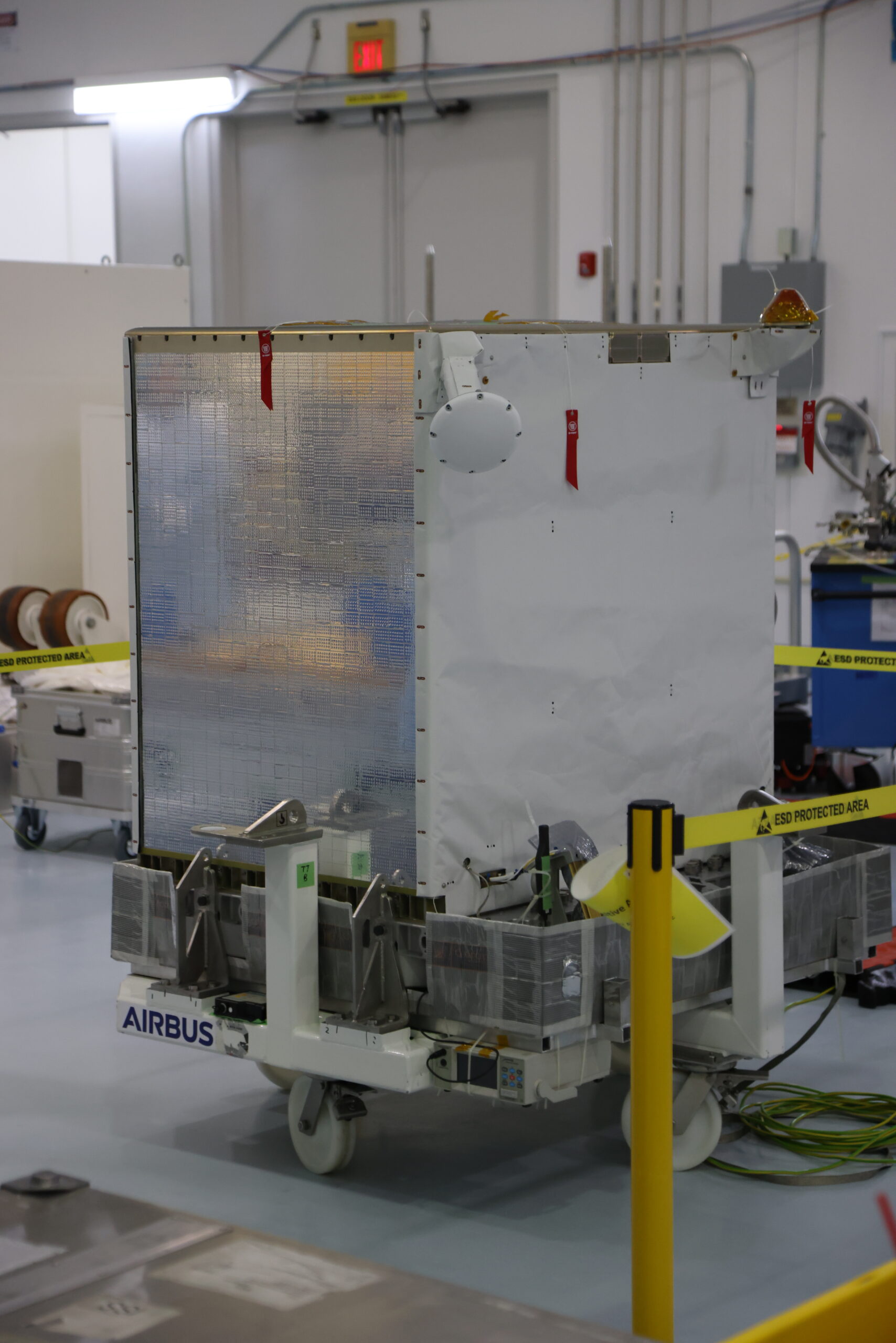
ACES in the Kennedy Space Center cleanroom.
Credit: NASA-KSC
SHM: the Space Hydrogen Maser
The Space Hydrogen Maser (SHM), built by Safran Timing Technologies in Switzerland, is the other clock of ACES. It operates similarly to the passive hydrogen maser clocks used in Galileo navigation satellites, but with ten times better short-term stability.
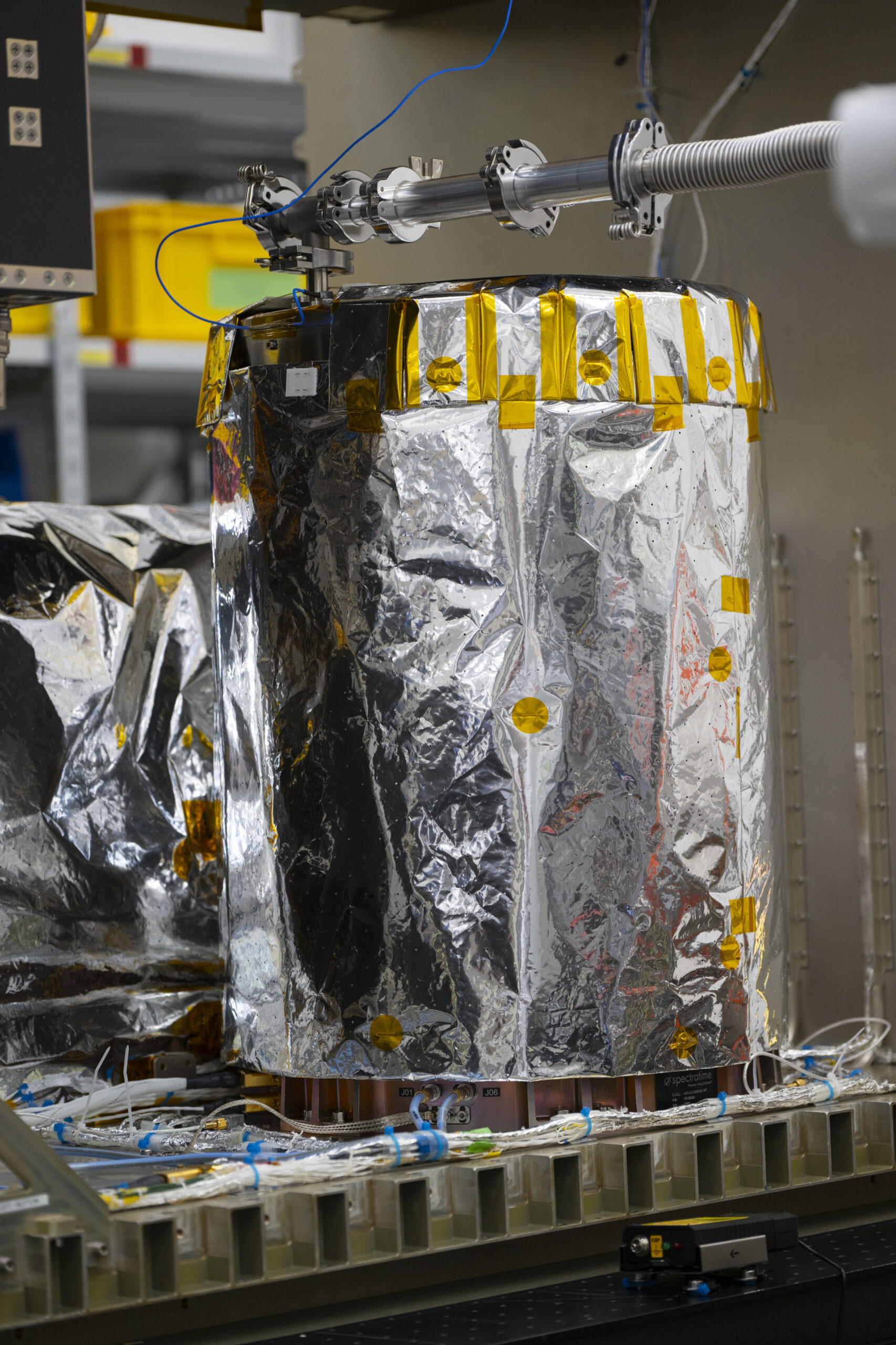
SHM (Space Hydrogen Maser) in the cleanroom at Airbus.
Credit: ESA-S. Corvaja
A hydrogen maser works by selecting hydrogen atoms from a plasma and preparing them all in the same energy state. These atoms are then directed into a microwave cavity where they naturally emit microwave radiation as they transition to a lower energy state. This radiation builds into a highly stable signal at hydrogen’s characteristic frequency of 1.42 GHz, or 1 420 000 000 oscillations per second.
In a passive maser, this emission is triggered by an external microwave source. But in an active maser such as SHM the atoms themselves drive the oscillation, creating a self-sustaining signal without external input. This design gives SHM exceptional short-term precision, making it the most accurate atomic clock ever flown in space for measurements of up to one hour at a time.

ACES was lifted out of its transport container at NASA’s Kennedy Space Center on 14 March 2025.
Credit: ESA-T. Peignier
The best of both worlds
ACES combines PHARAO’s incredible long-term accuracy with SHM’s exceptional short-term stability, creating an ultra-stable, ultra-precise time signal. SHM provides an extremely precise time signal over short durations, while PHARAO ensures that their time remains correct over long periods. Together, they achieve a level of accuracy so high that ACES would lose just one second in 300 million years. This makes ACES 10 times more precise than the atomic clocks used in today’s global positioning satellites, a breakthrough that could enhance future global navigation, improve fundamental physics experiments and even challenge Einstein’s theory of relativity in space.
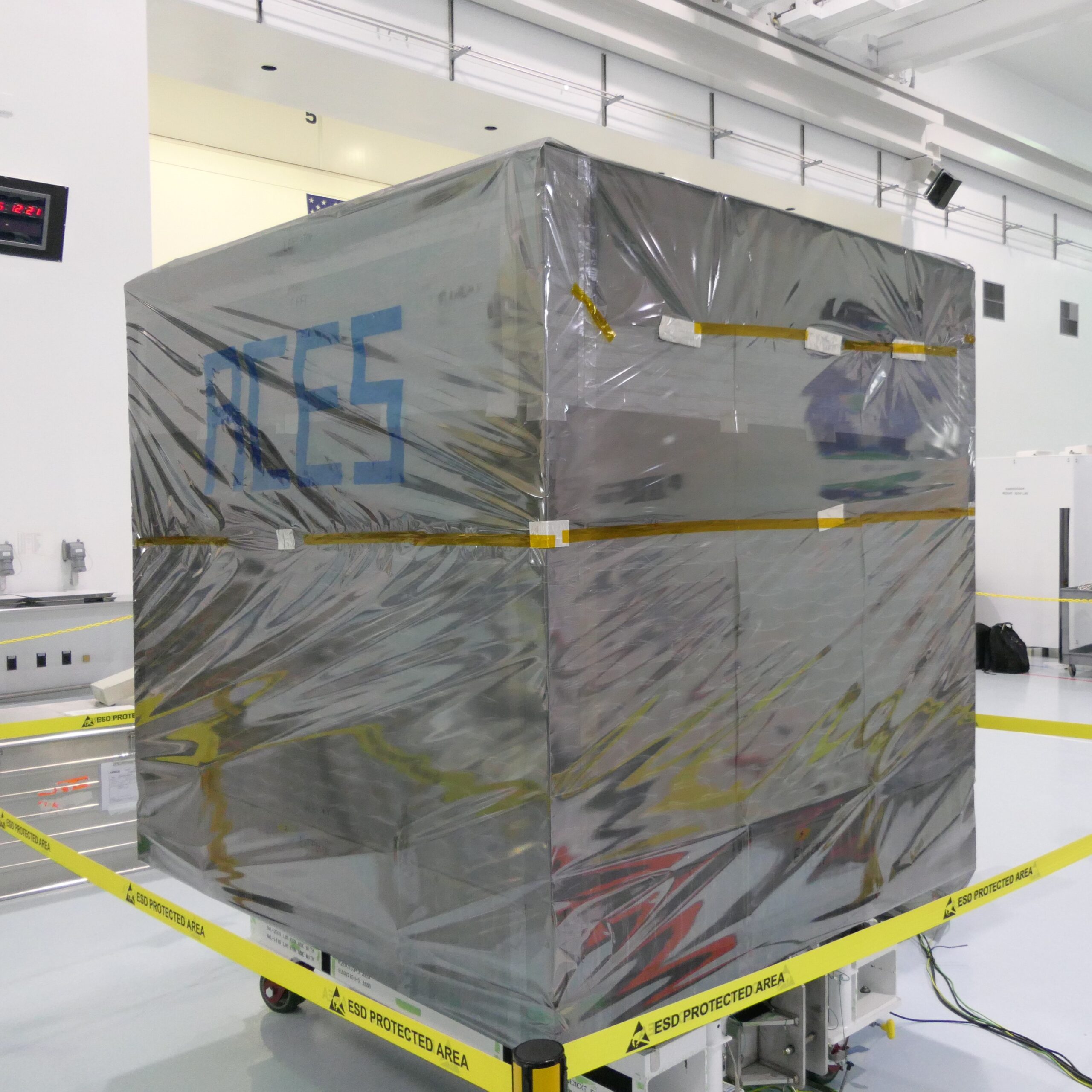
ACES fully wrapped at the Kennedy Space Center, ready to be integrated on Space X’s Falcon 9 ahead of its scheduled launch on 21 April 2025.
Credit: ESA-T. Peignier



